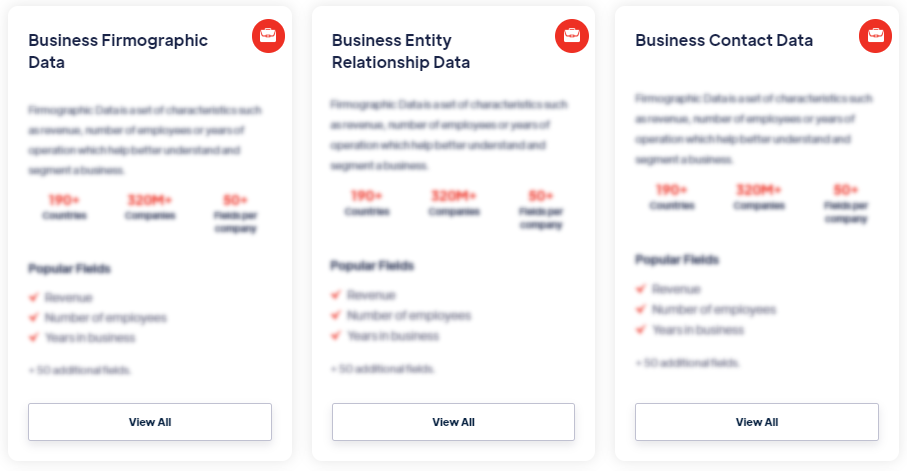Best
Sentiment Classification Data
Products
Sentiment classification data refers to a labeled dataset used for training machine learning models to classify text into different sentiment categories, such as positive, negative, or neutral. It contains text samples along with their corresponding sentiment labels, serving as the ground truth for training the model. Read more
Our Data Integrations


Request Data Sample for
Sentiment Classification Data

Browse the Data Marketplace

Frequently Asked Questions
1. What is Sentiment Classification Data?
Sentiment classification data refers to a labeled dataset used
for training machine learning models to classify text into
different sentiment categories, such as positive, negative, or
neutral. It contains text samples along with their corresponding
sentiment labels, serving as the ground truth for training the
model.
2. How is Sentiment Classification Data Used?
Sentiment classification data is used to train machine learning
models to automatically classify the sentiment expressed in text
data. The data is typically split into a training set, used for
model training, and a separate evaluation set, used for
assessing model performance. During training, the model learns
patterns and features in the text data that are indicative of
different sentiments, enabling it to classify new, unseen text
samples accurately.
3. What Types of Information are Included in Sentiment
Classification Data?
Sentiment classification data includes text samples, such as
customer reviews, social media posts, or product descriptions,
and their corresponding sentiment labels. The labels can be
binary (positive/negative) or more fine-grained, depending on
the specific sentiment classification task. The data may also
include additional metadata, such as the source of the text,
timestamps, or user information.
4. How is Sentiment Classification Data Generated and
Annotated?
Sentiment classification data is generated by collecting text
samples from various sources, such as online platforms or
specific domain-related documents. Annotators or domain experts
then manually assign sentiment labels to each text sample based
on the expressed sentiment. The annotation process may involve
guidelines or criteria to ensure consistency and quality in the
labeling.
5. What are the Challenges in Creating Sentiment
Classification Data?
Creating high-quality sentiment classification data can be
challenging due to the subjective nature of sentiment and the
need for accurate annotations. Annotators may have different
interpretations of sentiment, and addressing such discrepancies
is crucial for reliable training data. Additionally, the
diversity of language use, the presence of sarcasm or irony, and
the contextual nuances can make sentiment annotation complex.
6. How Can Sentiment Classification Data Improve Model
Performance?
Sentiment classification data plays a critical role in
improving model performance. By training on a diverse and
representative dataset, models can learn to capture various
sentiment patterns and expressions. High-quality annotations in
the training data ensure accurate supervision, enabling models
to make more accurate predictions on new, unseen text. Regular
evaluation of model performance on separate test data helps
identify areas of improvement and guide further refinements.
7. What are the Limitations of Sentiment Classification
Data?
Sentiment classification data has certain limitations, such as
bias in the annotation process, the evolving nature of language
use, and the challenge of generalizing across different domains
or languages. It is essential to address these limitations by
using well-defined annotation guidelines, monitoring model
performance on different datasets, and considering the potential
impact of biases during model development and deployment.
â€
